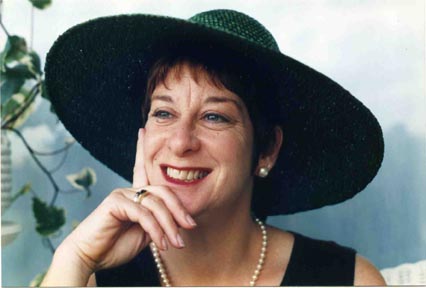 Whatever prior literary borrowing was committed, whatever J.K. Rowling’s Harry Potter series lacks in sheer literary merit, the seventh installment, Harry Potter and the Deathly Hallows, warranted its intense exposure this summer. Claiming readership across generations, gender and geography, the book’s detractors, like its “Dementors,” simply suck happiness from life.
Whatever prior literary borrowing was committed, whatever J.K. Rowling’s Harry Potter series lacks in sheer literary merit, the seventh installment, Harry Potter and the Deathly Hallows, warranted its intense exposure this summer. Claiming readership across generations, gender and geography, the book’s detractors, like its “Dementors,” simply suck happiness from life.Real world “Muggle” headlines of war, famine, floods and random violence returned soon enough. Since sensation sells news, hurrah that the stir of a book had the power to whisk the war in Iraq, the primary election campaigns in America, the floods in Britain, the fires in southern Europe, and global terrorism off our minds, albeit for a brief summer respite.
In fact, real world leaders can learn a lesson from the boy wizard…
While multiple themes thread throughout the Potter series, this final volume touches on a topic more often found in the business or political press: Harry’s ultimate feat is attainment of collaborative, reflective leadership. The boy wizard wields soft power.
Western mythology has focused on solitary heroes attaining supreme power: Divine right backed by divine might; one absolute hero vanquishing or vanquished by one clear villain. From Beowulf to Batman, heroes act alone and conquer evil with reciprocal violence. The message is and always has been – an eye for an eye, dominate or be dominated.
As a scholar of European Union public affairs and politics I have observed firsthand the EU’s efforts for multilateral cooperation. Speaking at European University Institute seminar in Fiesole, Italy a few years ago, Harvard University scholar Joseph Nye defined and defended his soft power concept “as the ability to get what you want by attracting and persuading others to adopt your goals.” Years before I had heard Mssrs. Fisher, Ury and Susskind, the authors of Getting to Yes and Breaking the Impasse, respectively, similarly extol the benefits of “shared leadership” and collaboration at the MIT-Harvard Public Disputes Institute.

Joseph Nye
More to the point, last March, Riane Eisler, author of the stunning Chalice and the Blade, and the recently released, The Real Wealth of Nations, urged a group of women leaders, “to replace stories that perpetuate the domination legends with partnership myths.” Knowingly or not, J.K. Rowling has taken an influential step in this direction.
Although Lord Voldermort is the prototypical arch villain, Rowling counterpoints this caricature by crafting Harry’s development as a reflective, indeed reluctant leader. Harry emerges in the mold of leader defined by Barbara Crosby of the Reflective Leadership Center at the University of Minnesota’s Humphrey Institute. Such leadership inspires and mobilizes “others to undertake collective action in pursuit of the common good.”
Flying like broomsticks throughout the Potter opus are themes of love, friendship, trust and loyalty, but in the end, the “pursuit of the common good” premise emerges prominently. And, the conceit isn’t overly simplified. Harry and other characters struggle to comprehend what constitutes “common good.” Teenage Harry’s reflective abilities are toughened as he learns that his mentor and hero, Dumbledore, had a youthful misunderstanding of the concept. Harry must not only grasp the nuances of Dumbledore’s transgressions, but also forgive them.
This ability to expose Harry’s fallibility and forgiveness renders Deathly Hallows a cut above the retributive pap of so many hero fantasies. Rowling encourages readers to think critically about what makes Harry a hero, what influences his choices. And since literally millions of these readers are juveniles, perhaps some will mature to consider soft power before obliteration as an option.
The parting 17-year-old Harry Potter is imbued with a finer capacity than sword or wand play or sheer magical attainment. Throughout the series he has fiercely sought truth; in this final quest he gains the valuable characteristics of understanding and self-knowledge.
In 1997, business writers Begley and Jacobs defined leadership as “the process of maximizing the capability of people to fulfill purpose through the development of character.” J.K. Rowling has penned an extended bildungsroman: Harry Potter the boy undergoes the requisite conflicts between his needs and those of the society around him, rising like Dumbledore’s phoenix as a more modern hero.
Choosing collaboration over his former preferred isolation to guide his choices, Harry advances his goals. He comes to understand and accept his own and others’ limitations, and overcomes his wavering mistrust of others. In this final episode, Rowling masterfully releases Potter to his potential as “a first among equals” – a prima inter pares – thereby producing the ripple effect of allowing others to lead. In fact, another ultimately wields the hero’s sword – it is an ally, not a solitary hero who literally slays the dragon, (well, snake). This real power of Potter is his triumph through partnership.

1 comment:
Brilliant and insightful, Susan! I sign after every word :)
Post a Comment